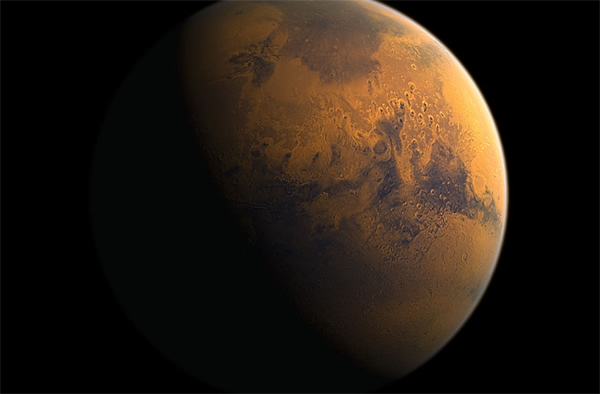IAU: 'Name a Mars Crater' Projects Not Legit
The International Astronomical Union — the official body that governs the naming and designations of all celestial objects — has once again spoken out against crowdfunded “space naming” efforts.
“The International Astronomical Union (IAU) would like to emphasize that such initiatives go against the spirit of free and equal access to space, as well as against internationally recognized regulations,” said Thierry Montmerle, IAU General Secretary. “Hence no purchased names can ever be used on official maps and globes.”
Although Tuesday’s IAU statement doesn’t explicitly say which projects they are calling out, it once again seems Uwingu is in the cross-hairs.
Previously, the US-based crowdfunding project faced the IAU’s wrath when it encouraged the public to nominate (for a fee) and vote on names for the flood of exoplanets that are currently being discovered. The problem is that the IAU does not officially recognize names given to celestial objects through these means, especially when a fee is charged for the naming rights. Uwingu, which means “sky” in Swahili, was set up by Alan Stern, planetary scientist and principal investigator for NASA’s Pluto New Horizons mission.
Uwingu aims to engage the public with space in a meaningful way, generating funds that are then distributed to various research organizations and charities. While the cause may be noble, the IAU is concerned that such campaigns are misleading, especially as there is zero official recognition for crowdfunded naming rights.
By Uwingu’s reasoning, there is a need to make designations of celestial bodies (like exoplanets) and planetary features (like the craters on Mars) a little more “human friendly.” As rationalized on their website, “the first planet discovered outside our solar system is named ‘PSR 81257+12 B’. Not so catchy, is it? Uwingu wants to give planets more human-friendly labels, and you can help!”
Unfortunately, critics have argued that it’s not necessarily clear to the public that their paid nominations are not officially recognized.
Uwingu is a little vague on this point. In the “Frequently Asked Questions” section of their Mars crater naming website, Uwingu alludes to the fact that the project isn’t officially endorsed. In response to the question, “How will our Uwingu Mars feature names be used?” they say: “They’ll be used by anyone using Uwingu’s Mars maps. For now that’s just the public, but soon, we hope, scientists and space missions to Mars will be using these maps too!”
The comparison that Uwingu has doggedly been defending itself against is its outward similarity with “name a star” scams. These scams involve companies ‘selling’ naming rights of a star for a fee. How is the Uwingu naming process different?
“Many companies that offer to sell you a star make don’t publish their name databases — so if you or an astronomer wants to find a star’s name, well, good luck! At Uwingu, our databases are fully open to all. And at Uwingu, naming helps support scientific research and education through grants given by The Uwingu Fund.” — Uwingu website.
This rationale doesn’t fly with the IAU, however.
The IAU has a common standard for naming celestial objects and features so they can be “easily located, described, and discussed” by scientists and the public alike. Although the public cannot directly nominate an official celestial name, the researchers who made the celestial discovery can request public participation for their official IAU-sanctioned naming nomination. And as pointed out by Montmerle, this process is free.
A recent example of an IAU-sanctioned naming event involved the appeal by the SETI Institute to help name the three new moons discovered orbiting Pluto. After a wonderfully spirited nomination and public voting process (that involved William Shatner endorsing the nomination “Vulcan” for one of the dinky satellites), the discovering astronomers and the IAU settled on Kerberos and Styx after deities of the underworld — a hellish theme that governs the Plutonian system. These are now the internationally-recognized designations for Pluto’s new moons that join siblings Charon, Nix and Hydra.
IAU rules may seem stuffy and old fashioned, but it is critical to have recognized nomenclature so to avoid confusion and to create a standard across space science disciplines. This is particularly relevant today as the dizzying number of exoplanetary discoveries are accelerating. I can think of nothing more frustrating and confusing than having to deal with random names of celestial features and objects that have no theme or relevance to the scientists that have committed their lives to studying in that field. That, in my view, is the antithesis to a “fair” naming system.
That’s not to say, however, that celestial features can’t have unofficial names (i.e. “Mount Sharp” on Mars was named so by NASA’s Mars Science Laboratory team before Curiosity touched down in Gale Crater — that Mars mountain’s official IAU name is in fact Aeolis Mons), but there should be no confusion over what is official and what is not, especially when a fee is being charged.(Mar 11, 2014 12:58 PM ET // by Ian O'Neill)












